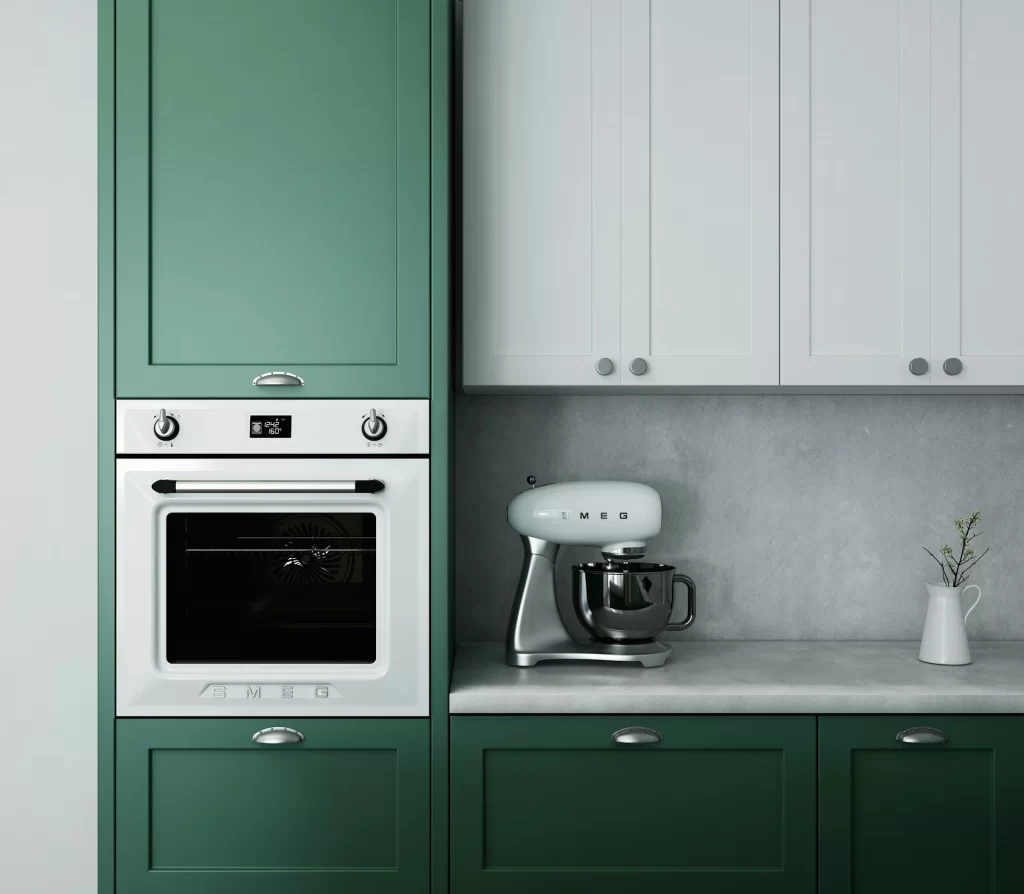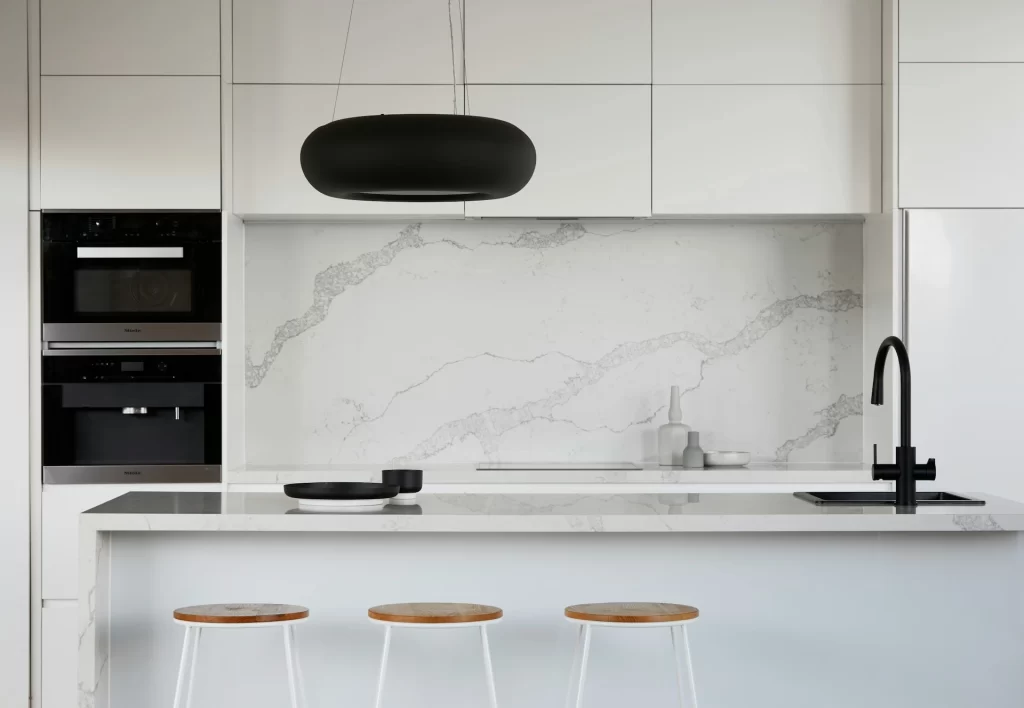
Productivity may be difficult without a designated workspace at home. While a completely spare room is your best bet, you may not have such a luxury if space is a constraint. To locate your office, consider the kitchen. If adequately set up, you gain a new functional workspace within your home. Personally, I’ve explored using the kitchen to work and have experienced both the pros and the cons.
Let’s delve into how to effectively use your kitchen as an office, whether you’re just looking for a temporary solution or considering a more permanent transformation.
You may prefer to set aside an hour or two for planning your space, whether it involves mapping out new supplies to purchase or rearranging furniture. Go through the list of items we’ll cover below to avoid forgetting or neglecting a key aspect.
Using the kitchen as a makeshift office
When setting up your kitchen office, it’s essential to maintain a balance between productivity and the functional aspects of your kitchen. It involves choosing the right spot for an adequate desk setup, alongside basic decluttering and distraction management to maximize functionality.
Whenever you convert an existing area of your home into a dual-purpose space, it’s important to consider that there may be limitations on the extent of changes you can implement.
Without making drastic changes, you can create an adequate desk setup through the following steps:
- Choose the Right Spot: Your dining table is often the best choice for a makeshift kitchen office. It typically provides a spacious surface, situated away from the cooking and food prep areas. More details later on setting up your kitchen desk.
- Access to Power Outlets: Ensure easy access to power outlets to charge your devices. If the nearest outlet is too far from your table, consider using an extension cord to avoid inconvenient cable clutter.
After which, simply declutter and manage distractions:
- Declutter: Clear the dining table of any unnecessary items, like dishes or non-essential decor. A clutter-free workspace will maximize how functional your desk is.
- Distraction-Free Environment: Position your office away from your kitchen’s work zone. Keep kitchen appliances out of sight as far as possible, when seated (or standing) at your makeshift desk. You may also want to remove junk food from your fridge and stock up healthy supplies of water, tea, and beverages.
- Organize Office Supplies: Keep your workspace organized with office supplies close at hand, perhaps tucked away in drawers or small containers.
If you live with others, it’s crucial to address potential distractions. Here are some ideas to help you stay productive:
- Set Ground Rules: Communicate with family members or housemates to establish “office hours” and minimize disruptions during work time. This is crucial and unavoidable since you are working in the kitchen – the most frequented part of the home. I have gone into detail separately on how you can manage others and reduce interruptions during your workday.
- Noise-Canceling Headphones: Invest in noise-canceling headphones to block out noises from your household members or neighbours.
- Virtual Backgrounds: When using video conferencing tools, employ virtual backgrounds to maintain privacy and a professional appearance.
This article was originally published on unboundist.com. If it is now published on any other site, it was done without permission from the copyright owner.
Setting up your kitchen desk
A kitchen table can serve as a makeshift desk, offering a flat and spacious work surface. To optimize functionality, ensure it is at an appropriate height for comfortable typing and screen viewing, and consider adding ergonomic accessories for extended work sessions.
Hopefully, you do not have to shift a proper desk into your kitchen, making the space cramped. You can stick with your existing dining table as long as it meets the criteria for comfortable use, provided that you can easily make a few customizations.
Here’s what you need to consider:
- Ergonomics: The table’s height is critical for both typing comfort and screen viewing. If it’s too high or too low, it can lead to discomfort or even physical strain. You may need to use an adjustable chair or seat cushion to achieve the right height.
- Device Placement: Fit all your devices on the table comfortably, ensuring easy access to your laptop, keyboard, and mouse.
- Ergonomic Accessories: Consider adding ergonomic accessories like a keyboard tray or an adjustable laptop stand to improve your posture and reduce strain during extended work hours.
Related: Bad Desk Ergonomics (10 Examples): Avoid These Mistakes!
If you’re looking for alternatives to the dining table, any existing kitchen countertop or floating shelves against your kitchen wall can also be repurposed for productivity.
For a kitchen countertop desk, you might prefer to use sturdy barstools or ergonomic chairs, or simply go with standing. The same goes for using any floating shelf as a desk in your kitchen – its height likely doesn’t match your kitchen chair’s height, so adjustable ergonomic chairs might be preferred.

Transforming your kitchen into a proper office
What if you would like to make serious changes to your kitchen for productivity? Perhaps you are looking to work intensely in the kitchen all day, beyond just using it for one afternoon in a makeshift manner. Transforming your kitchen is possible even if space is limited.
To transform a kitchen into your all-day office, you should invest in furniture, including ergonomic tools and lighting, and consider repurposing kitchen storage spaces for office supplies. If space is limited, consider maximizing empty walls or corners.
If you require a more permanent office setup in your kitchen, here are some steps to consider:
- Invest in Furniture: Rather than using the kitchen table or countertops, shift in a dedicated desk and ergonomic chairs. A proper desk setup will improve your comfort and productivity over long hours.
- Lighting: Ensure proper lighting with task lamps and cool lighting for productive work, if natural light isn’t available. Ensure your kitchen is generally well-lit to reduce eye strain.
- Repurpose Kitchen Storage: Use kitchen storage spaces for office supplies and equipment. If you are using your kitchen daily, you want your office tools to be easily accessible so you do not waste time transferring or finding your tools, such as paperwork, stationery, cables, batteries, and so on.
- Space-Saving Solutions: If your kitchen space is limited, consider space-saving solutions like a wall-mounted desk, a corner nook (maximizing an unused corner), or a folding desk that can be stored away after use.
For a permanent kitchen office, you may even want to seriously consider clearing the fridge of junk food and instead, stocking up healthy drinks and snacks. This could go a long way to weed out the dietary distractions and help you stay focused.
For more home office tips, check out our comprehensive guide. This guide will ensure you leave no stone unturned as you maximize space and go about transforming an area or several parts of your home into a productivity haven.